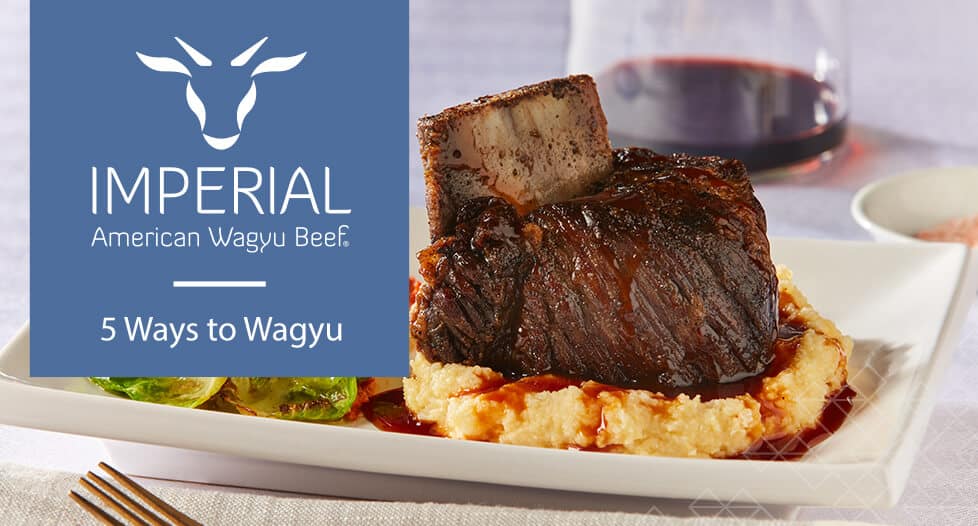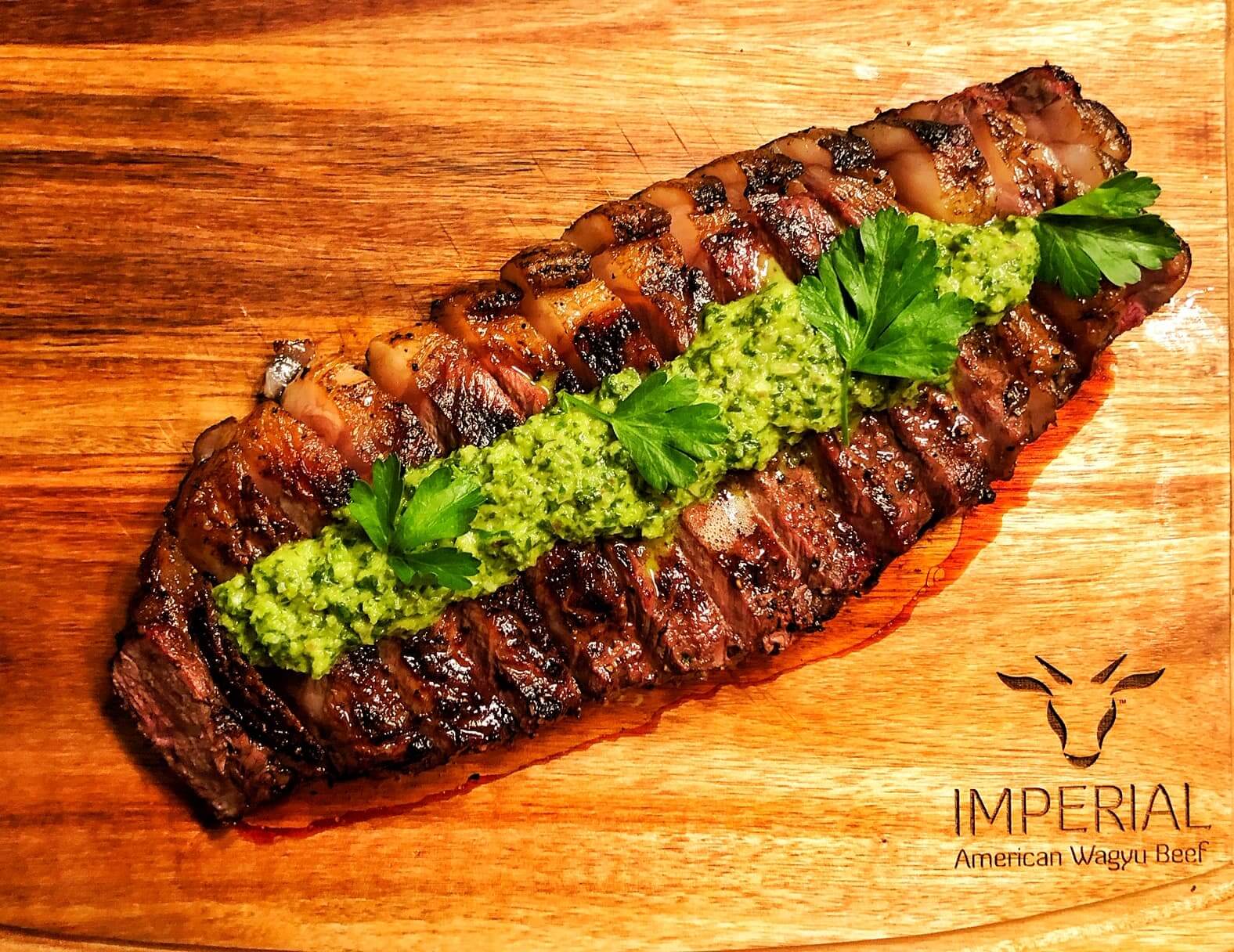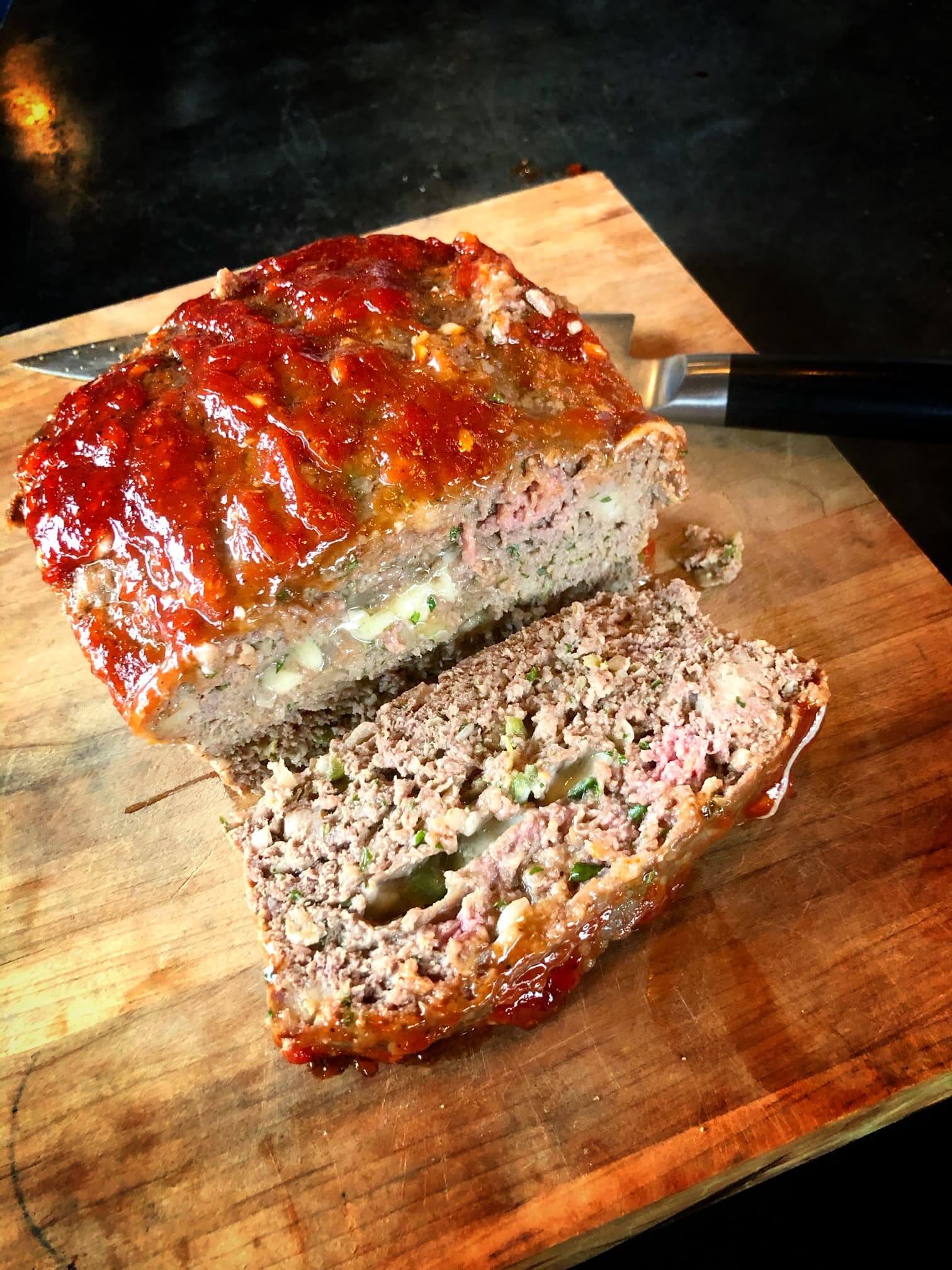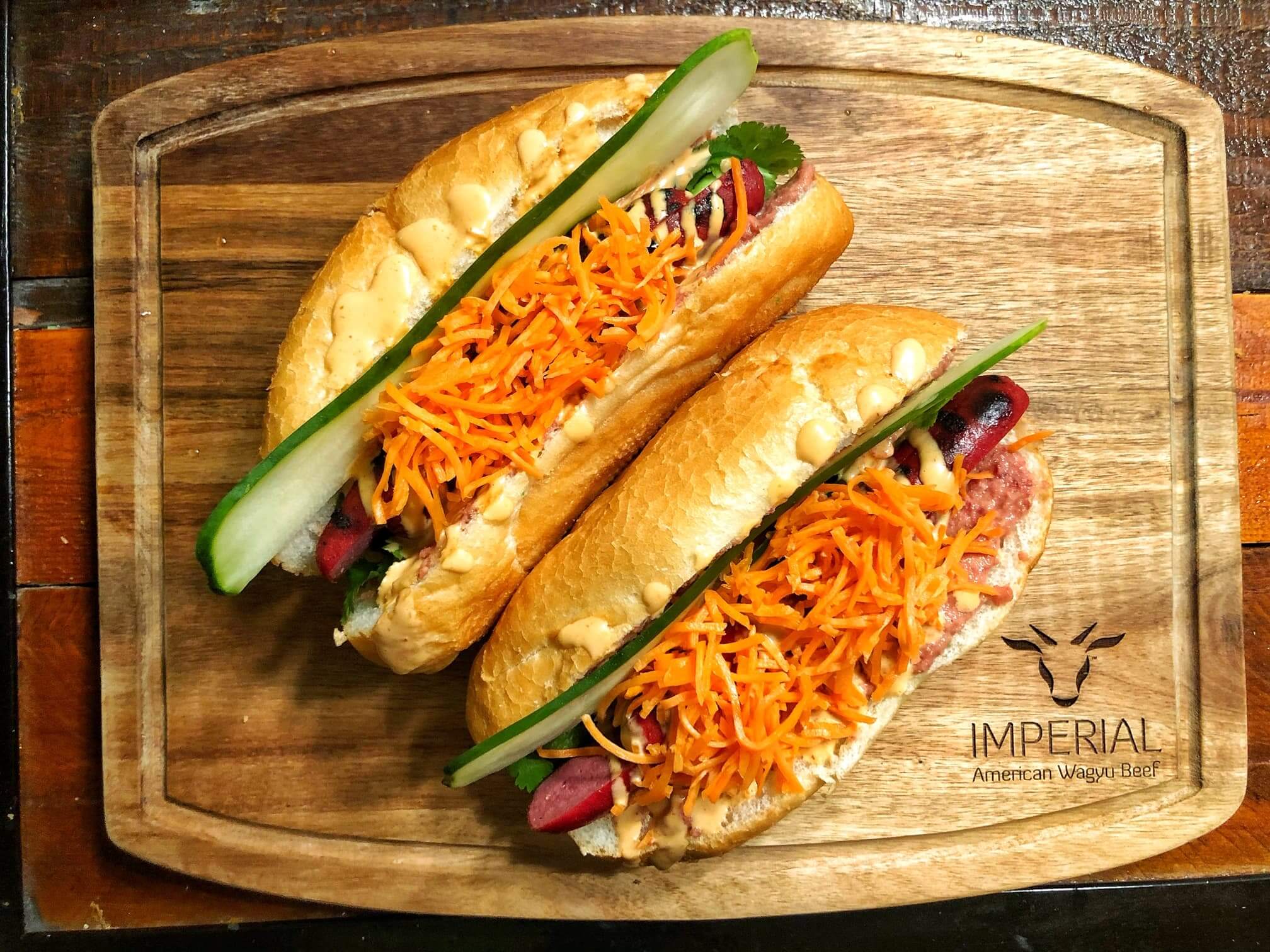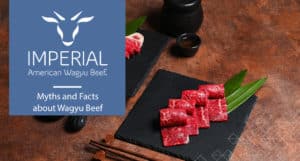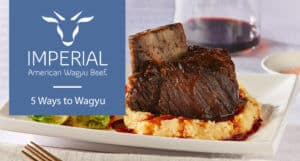If your daydreams tend to be filled with visions of your next great home-cooked meal, then it’s high time to test to your culinary chops with American Wagyu. Wagyu is known for its exceptional marbling, flavor, and tenderness. If you aren’t yet familiar, our previous blog, “What is American Wagyu Beef?” breaks down all the details.
Whether you’re new to Imperial American Wagyu Beef or just looking for some creative ways to prepare it, read on to discover different cuts of Wagyu beef and how to prepare them, including recipes and prep tips courtesy of Chef Ryan Andre, Chopped runner-up, former head chef at City Pork Brasserie and Le Creole in Baton Rouge, and founding chef of Soji Modern Asian.
1. Classic Cuts of American Wagyu: Seared.
Skeptical of claims about American Wagyu’s greatness? Then it’s best to keep things simple for your own personal taste test. Choose a classic cut of steak, like American Wagyu Ribeye or New York Strip. These cuts will best showcase American Wagyu’s telltale marbling. They also taste best when prepared with simple cooking methods.
Word to the wise: less really is more. The richness of Wagyu will satiate you much more quickly than regular beef.
If frozen, let your Ribeye or New York Strip steaks thaw in the fridge first. Pat dry with paper towel and season, keeping it simple. Remember you’re trying to enhance flavor, not cover it up. Large flake salt and fresh ground pepper are all you need. A flat surface, like a cast-iron skillet, is less risky than the grill, as the latter risks dripping delicious fat and losing it to the flames. Once the surface is screaming hot, add a dollop of oil or butter and wait until it is just starting to smoke before dropping the steaks on. One-inch steaks need about 2 to 3 minutes per side for a beautiful crust. Then pop them in a 400°F oven to finish cooking, about 4 to 5 minutes for medium-rare, 6 to 7 minutes for medium.*
Overcooking Wagyu is a cardinal sin, as it causes the fat—Wagyu’s most precious resource—to render and bleed out, diminishing its rich flavor.
If you’re worried about overcooking, especially when working with thicker steaks, a foolproof trick is to try a reverse sear. Start with your steaks on a sheet pan in a 275°F oven. Depending on their thickness, you’ll need 15 to 20 minutes for them to reach a target temp of 90°F to 95°F (medium rare) or 100°F to 110°F (medium). Then finish by searing them on a heated skillet, a few minutes per side until a nice crust is achieved, bringing the internal temperature up to your desired temperature.*
Once done, don’t forget to always let your steak rest for 7 to 10 minutes before eating. This allows moisture inside the meat to redistribute, making for a juicier, more tender and flavorful experience.
Ready to level up? Check out Chef Andre’s recipe for Grilled New York Strip with Browned Butter and Chimichurri.
2. Wagyu Short Ribs: Braised.
Wagyu short ribs are an indulgence. Since beef short ribs come from the front end of the steer’s rib cage, they share characteristics of both ribs and the adjacent chuck region, most notably the noticeable marbling you’ll see on rib steaks and the rich, beefy flavor typical of chuck roasts.
Naturally tougher than other cuts, short ribs benefit from low and slow cooking to achieve tender goodness, which is why many recipes call for set-‘em-and-forget-‘em-type methods like braising or using a slow-cooker.
A top-three choice for Chef Ryan (up there with New York Strip and Flank Steak), he prefers braising them in a simple liquid of red wine, tomato paste, and beef broth.
First, brown the short ribs on all sides in a Dutch oven. Then add enough of the wine-paste-broth liquid to come up 3/4ths of the way on the short ribs, along with any other ingredients for flavor you may want – Chef Andre likes carrots, onions, fresh thyme, rosemary, parsley, and oregano. Cover with a lid or foil and cook in a 350°F oven for 4 to 5 hours, or until meat is tender.
Given the wonderfully tasting liquid you’ll get along with the short ribs, they pair well with something that absorbs all that gravy goodness, like mashed potatoes.
3. Ground American Wagyu: Loafed.
One of the best ways to experience ground American Wagyu’s wow-factor front and center is through a meatloaf. Yes, a meatloaf.
This, however, is a very grown-up meatloaf that features a midsection of Gruyere cheese, as well as ingredients like garlic, onion, Panko breadcrumbs, poblano peppers, and celery mixed throughout.
The key to mixing ground Wagyu with other ingredients is to blend while the meat is cold and not to overmix. Otherwise, the beef fat will disperse into the mixture, leaving you with a mealy texture in the end.
Check out the full details of Chef Andre’s Gruyere-Stuffed Wagyu Meatloaf recipe.
Looking for other ideas for Wagyu Ground Beef? While the possibilities are endless, why not consider Wagyu Cali Burgers, Fresh Wagyu Beef Breakfast Sausage, Wagyu Dumplings, or Wagyu Meatballs and Sweet Pea Risotto?
4. Sirloin Tri-Tip: Tostada’d.
With American Wagyu, you can be richly rewarded for going off the beaten path, steak-wise. Less familiar cuts like Sirloin Tri-Tip steaks, a triangular cut that comes from the bottom (“tip”) of the sirloin, offer up exceptional flavor when prepared like a traditional steak or used in any number of exciting recipes. Tri-Tip steaks vary somewhat from other cuts in terms of tenderness, marbling, shape, and size.
One trick getting the most tender bite to cut the meat against the grain when getting ready to plate. To cut against the grain, look for which way the muscle fibers run, then cut perpendicularly.
Another way to fully bring out the tenderness and juiciness of Wagyu Tri-Tip steaks is through marinating—Chef Ryan’s a big fan of using a marinade in the recipe for Garlic Citrus Tostadas.
5. Wagyu Hot Dogs: Marinated and Grilled.
If there’s anything you should’ve learned by now, it’s that American Wagyu elevates any eating experience, no matter what form or shape it takes.
For a deliciously fun, haute-cuisine take on the most American of meats—the hot dog—Chef Ryan loves an East-meets-West Banh Mi Dog. It’s a riff on the classic Vietnamese Banh Mi Sandwich, featuring marinated Wagyu beef hot dogs topped with pickled carrots, homemade pate, and a Sriracha mustard.
The question is, after these Wagyu hot dogs, will you ever be able look at your regular, run-of-the-mill franks the same way again?
Coming soon – Watch our social for store announcements!
American Wagyu may seem intimidating, but with these five easy tips and trick, you can feel confident preparing delicious dishes. Once you taste American Wagyu, it is sure to become the star of many memorable mealtimes to come. Elevate any celebration with Imperial American Wagyu Beef. Visit our website for more American Wagyu Recipes!
*According to foodsafety.gov, the minimum safe temperature is 145°F for fresh beef and 160°F for ground beef.

